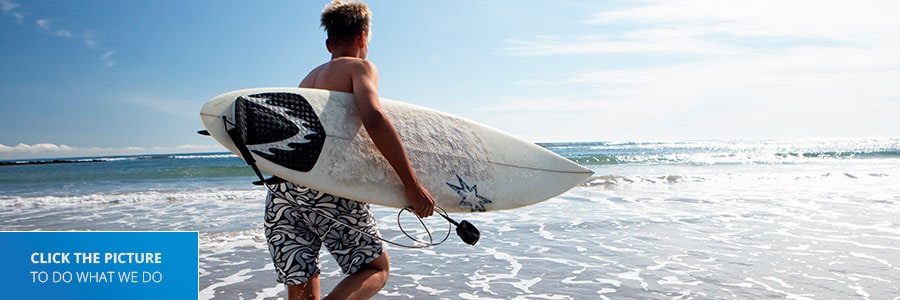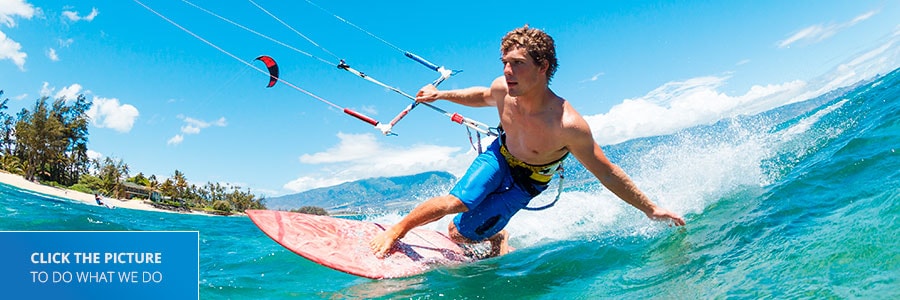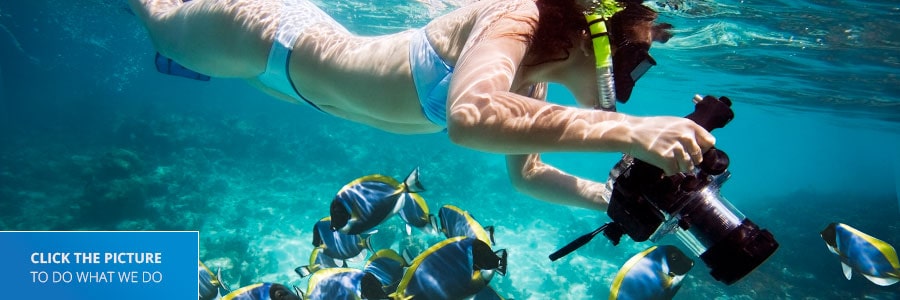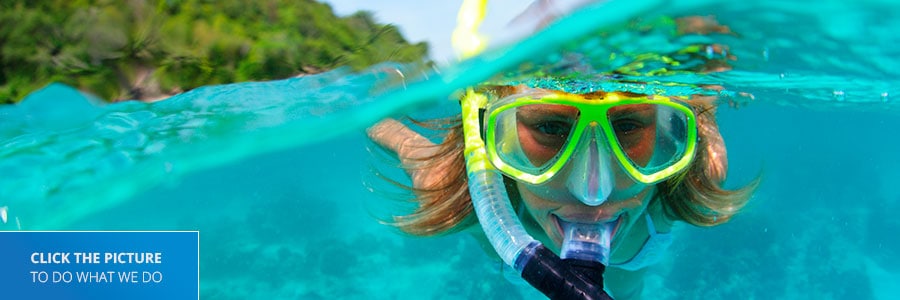Pearl Harbor is the headquarters of the Pacific Fleet of the United States, and operates as one of the largest US Naval bases. The harbor and its surrounding lands west of Honolulu are also a deep-water naval base. It was given two names in Hawai’ian: “Wai Momi” which means pearl water, and “Puʻuloa” which means long hill.
Legend say Puʻuloa was the neighbor of the dolphin god Kaʻahupahau. According to Hawai’ian tradition, a navigable channel near the present Puʻuloa salt works was cut by Keauni, the head of the powerful Ewu chiefs. It was there that he widened and deepened the water passage where the tide met the river current. The partly closed body of water known as Pearl Lake was then accessible to navigation.
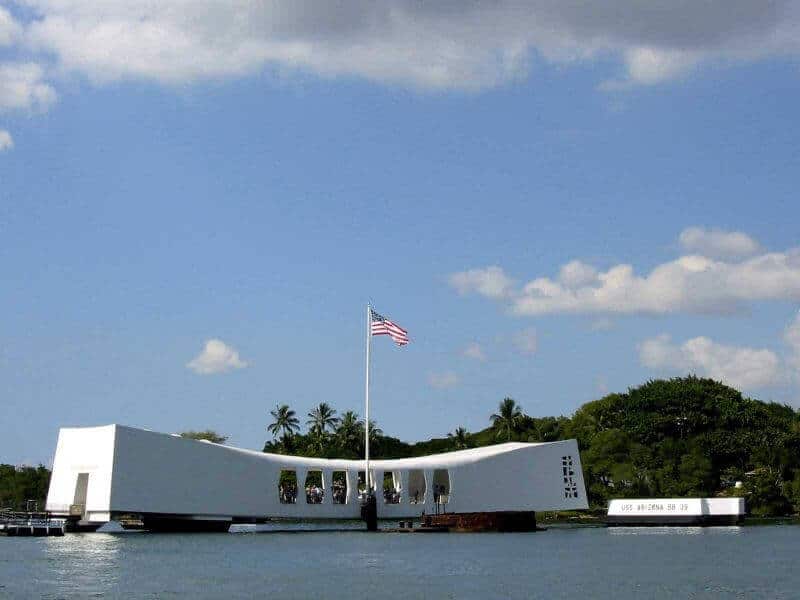
During the early 19th century, Pearl Harbor was not used for large ships due to its shallow entrance. On March 1, 1869, Congress approved an appropriation of $50,000 to deepen the approaches to the harbor. During that time, naval officers played an important role in internal affairs; they served as arbitrators in business disputes, negotiators of trade agreements, and defenders of law and order. Voyages aboard US warships were arranged periodically to other islands and to the mainland for members of the Hawai’ian royal family and important island government officials.
During the reign of King Kalākaua, the United States was granted exclusive rights to enter Pearl Harbor. However, the shallow entrance still supplied a powerful barrier against the use of the deep protected waters of the inner harbor. The United States Senate allowed the Navy the exclusive right to maintain a coaling and repair station at Pearl Harbor on January 20, 1887; they took possession 11 months later on November 9.
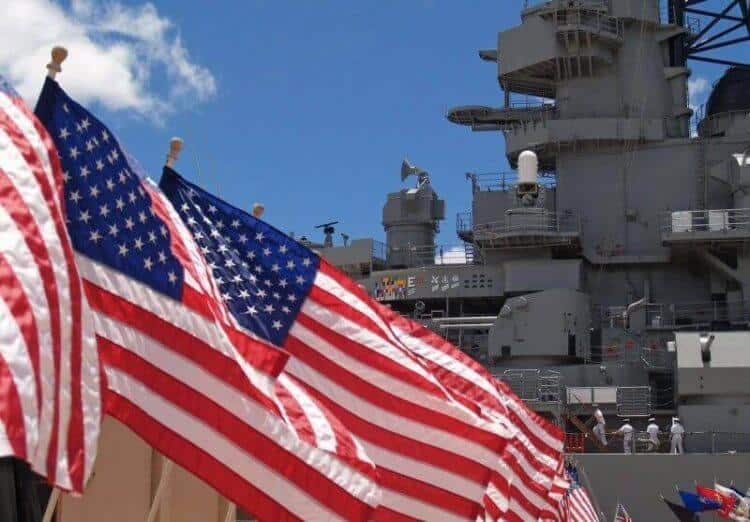
On December 7, 1941, a date which will live in infamy, Pearl Harbor and the surrounding military units were attacked. At 7:48 a.m. Hawai’i time, hundreds of Japanese fighter planes from the Imperial Japanese Navy attacked Pearl Harbor. This event provoked America’s entry into World War II, and on December 8, 1941, President Roosevelt declared war on Japan.
This fierce surprise attack came in two waves launched from six aircraft carriers. The attack left 2,403 Americans dead and 1,178 others wounded. Over 350 aircrafts were damaged or destroyed, and all of the 8 battleships belonging to the US Pacific fleet were damaged during the attack. All damaged ships, except the USS Arizona, the USS Oklahoma, and the USS Utah were rebuilt, repaired, and put back into commission. The Japanese also sank or damaged 3 destroyers, an anti-aircraft training ship, 3 cruisers, and 1 minelayer. The USS Arizona and USS Utah remain at the bottom of Pearl Harbor. The losses to the Japanese were very light; only 1 Japanese sailor was captured, 65 servicemen were killed or wounded, and 29 aircrafts and 5 midget submarines were lost.
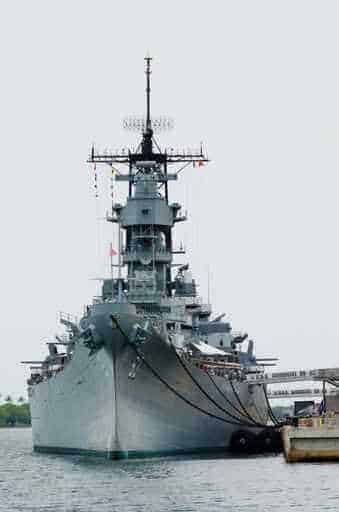
Today, Pearl Harbor has displays, exhibits, memorials, and museums that honor not only the victims of the Japanese attacks, but all those who bravely served in World War II. The USS Arizona Memorial is built over the sunken wreckage of the USS Arizona – the final resting place for her and many of her 1,177 crewmen killed on that early December morning.
Still today, the Arizona continues to leak oil into the harbor. Many believe that the drops of oil leaking from her are the tears of the soldiers buried there. The National Park Service, respecting the wreck as a War Cemetery, has taken no action to stem the leaks. From an environmental point of view, the leak is minor – only a few pints per day. The memorial is part of World War II Valor in the Pacific National Monument.
The USS Arizona Memorial tour is approximately 75 minutes and is open to all ages. It includes a movie on the attack on Pearl Harbor, and a boat ride to the memorial. There are also two museums at the Pearl Harbor Visitor Center that tell the story of the attack and World War II.
Useful Information:
The Pearl Harbor Visitor Center and Pacific Historic Parks bookstore is open 7 days a week, 7:00 a.m. – 5:00 p.m. Closed Thanksgiving, Christmas, and New Year’s Day.
USS Arizona Memorial tours run every 15 minutes from 8:00 a.m. – 3:00 p.m. Visitors do not need tickets for the Pearl Harbor Visitor Center and museums. Entrance is free.
To reserve a Pearl Harbor Half Day Tour, visit pearlharborhistoricsites.org or call (808) 454 -1434. Tours can also be purchased at the Pearl Harbor Historic Sites desk, located in the courtyard of the Pearl Harbor Visitor Center. The desk is open daily from 7:00 a.m. – 4:00 p.m. Closed Thanksgiving, Christmas, and New Year’s Day.
USS Arizona Memorial Tour tickets can be reserved at recreation.gov.
Pearl Harbor has a “No Bags” Policy – all purses, handbags, backpacks, fanny packs, camera bags, diaper bags, and/or any other type of bag that can conceal an object are not permitted inside Pearl Harbor, the Visitor’s Center, or to any of the attractions. A storage facility is available for $3.00 per bag at the entrance to the National Park. Cameras and camcorders are permitted.
Pearl Harbor is near Waikiki and you can visit it while enjoying other tours in Oahu.
